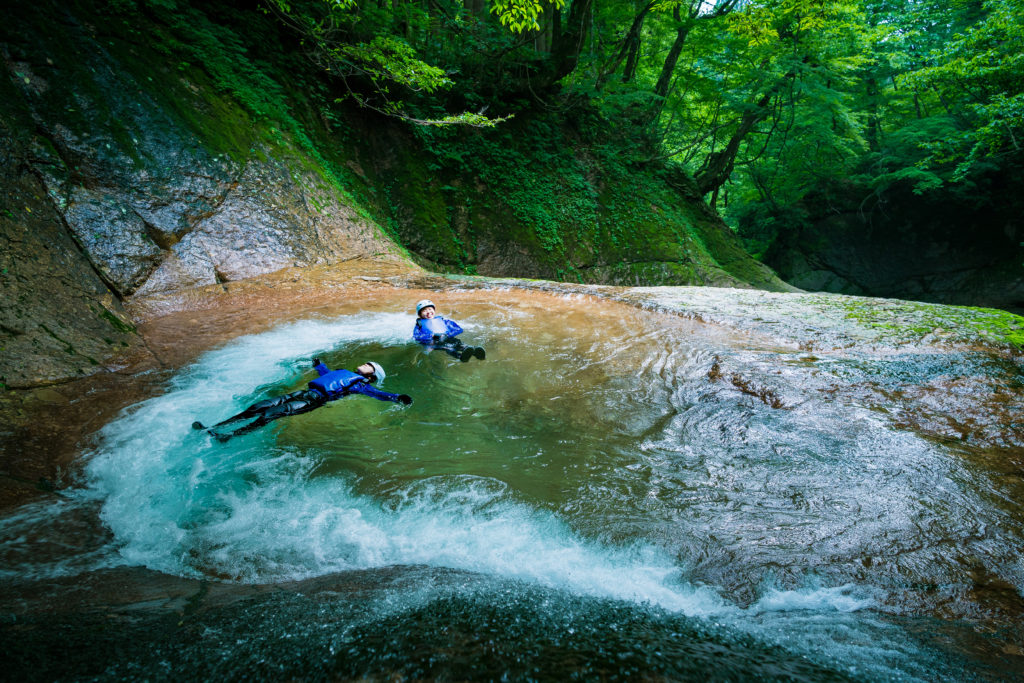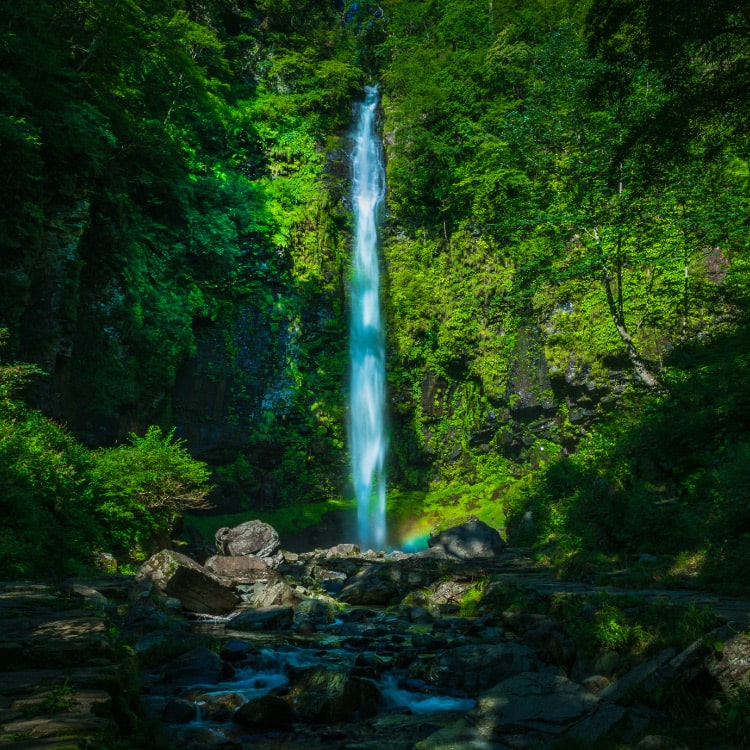
EARTHSHIPShower climbing / Rafting / SUP
A luxurious outdoor experience for over 18 years old

Shirotori-cho, located in the northwestern part of Gujo, is prospered with Hakusan Faith. In 717, monk Taicho reached the mountaintop of Mt Hakusan, a sacred mountain, protected by gods, and started worshiping. Mino Zenjodo started from Nagataki Hakusan-jinja Shrine, was crowded with abundant worshipers at that time, and is still visited by many mountain climbers. In the northern area of Shirotori-cho, great cedar tree in Itoshiro, which is estimated to be 1,800 years old and has a circumference of about 13.4m, and Amidagataki Waterfall, which was a training ground for monks, still remain spreading the atmosphere of a "sacred area". In Nagaragawa River, running from north to south through the center of the town, mountain stream fishing is open every year from 1st of February to late summer. Many anglers come and join.

A luxurious outdoor experience for over 18 years old

A base for connecting people and Ayu through touching, playing, eating and having fun

Enjoy natural Ayu cuisine while seeing Nagaragawa River flowing in front of you
MINAMI
AREA
Minami, located at the southern part of the city, is having the fastest speed of river flow and is one of the most famous river sports mecca.
WARA
AREA
Wara is famous for lightning bugs observation in June. Ayu grown in this area is selected as the best Ayu in Japan.
HACHIMAN
AREA
Hachiman is called the town of water. Gujo Odori Dance Festival with a history of over 400 years old is also very famous all over the country.
MEIHO
AREA
Meiho is located along Seseragi Kaido linking Hachiman and Hida Takayama. Camping in summer and winter sports in winter can be enjoyed.
YAMATO
AREA
Yamato, a town of history, is making up by several mountain villages and towns along Nagaragawa River.
SHIROTORI
AREA
Shirotori, the birth place of Hakusan Faith. Itoshiro Hugh Cedar aged 1800 years old and Amidagatake Waterfall are creating a holy atmosphere.
TAKASU
AREA
Takasu is located in the north of the city. It is the headwater of Nagaragawa River. It is crowded with people in both summer and winter as a resort.